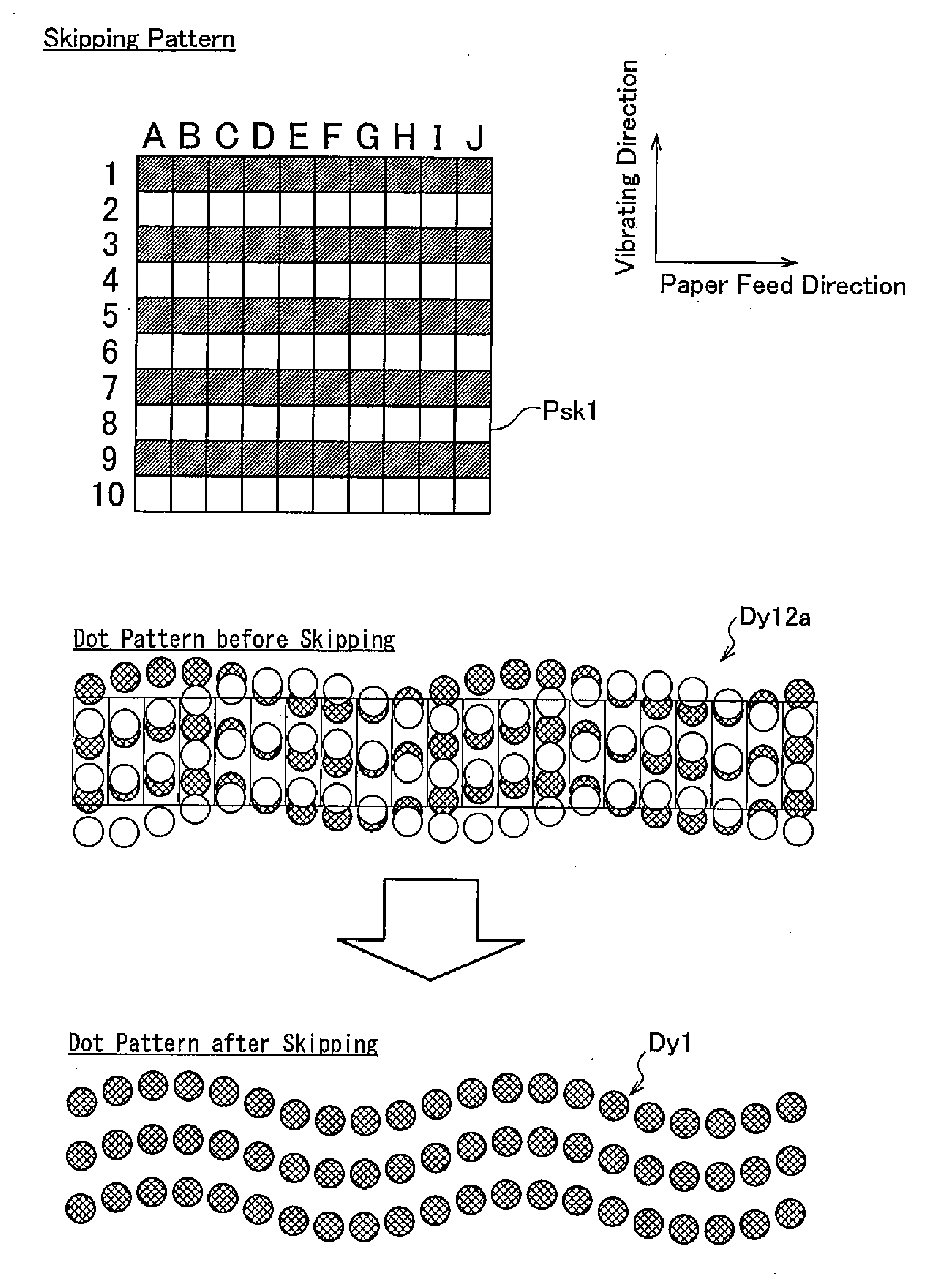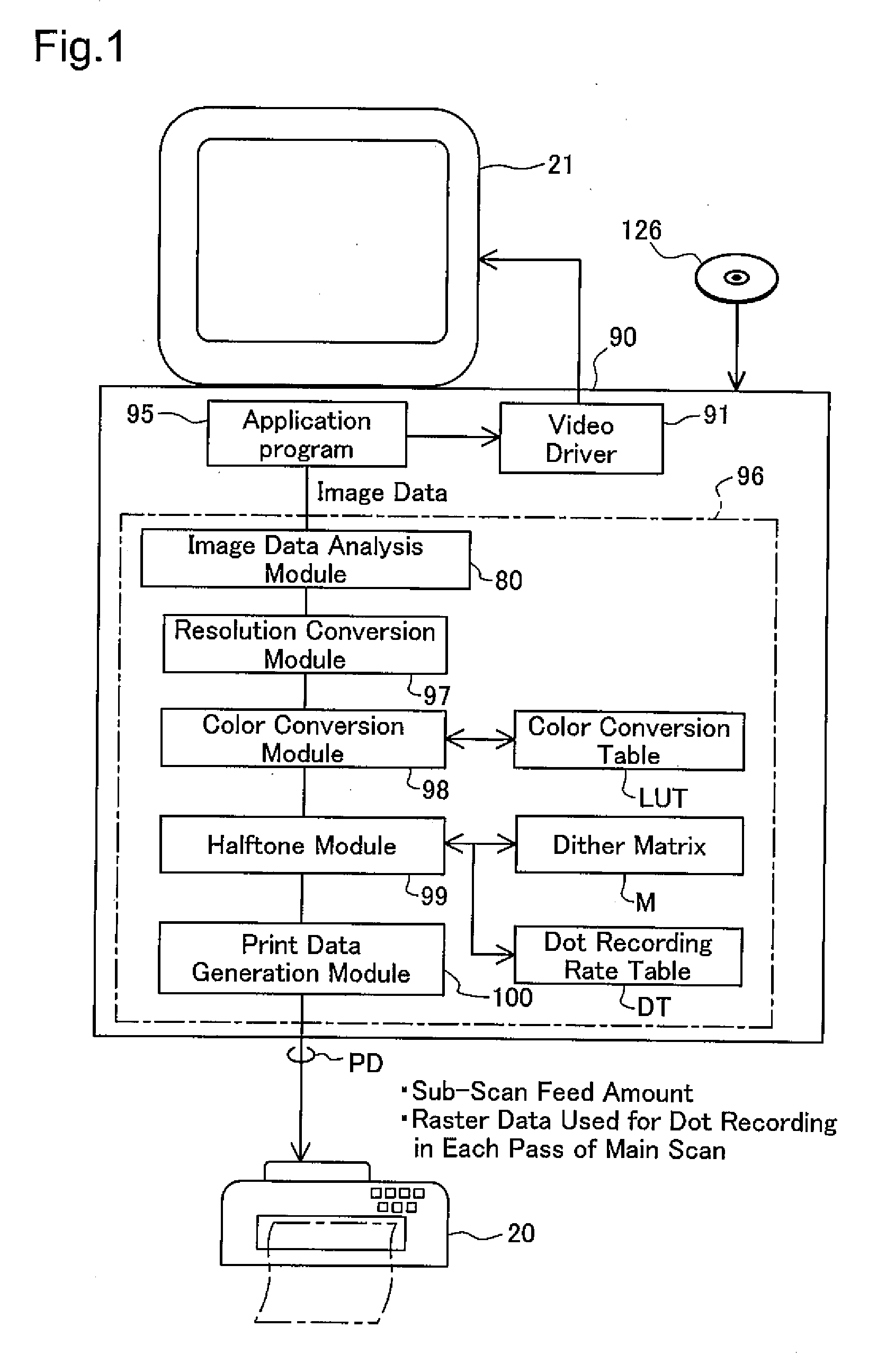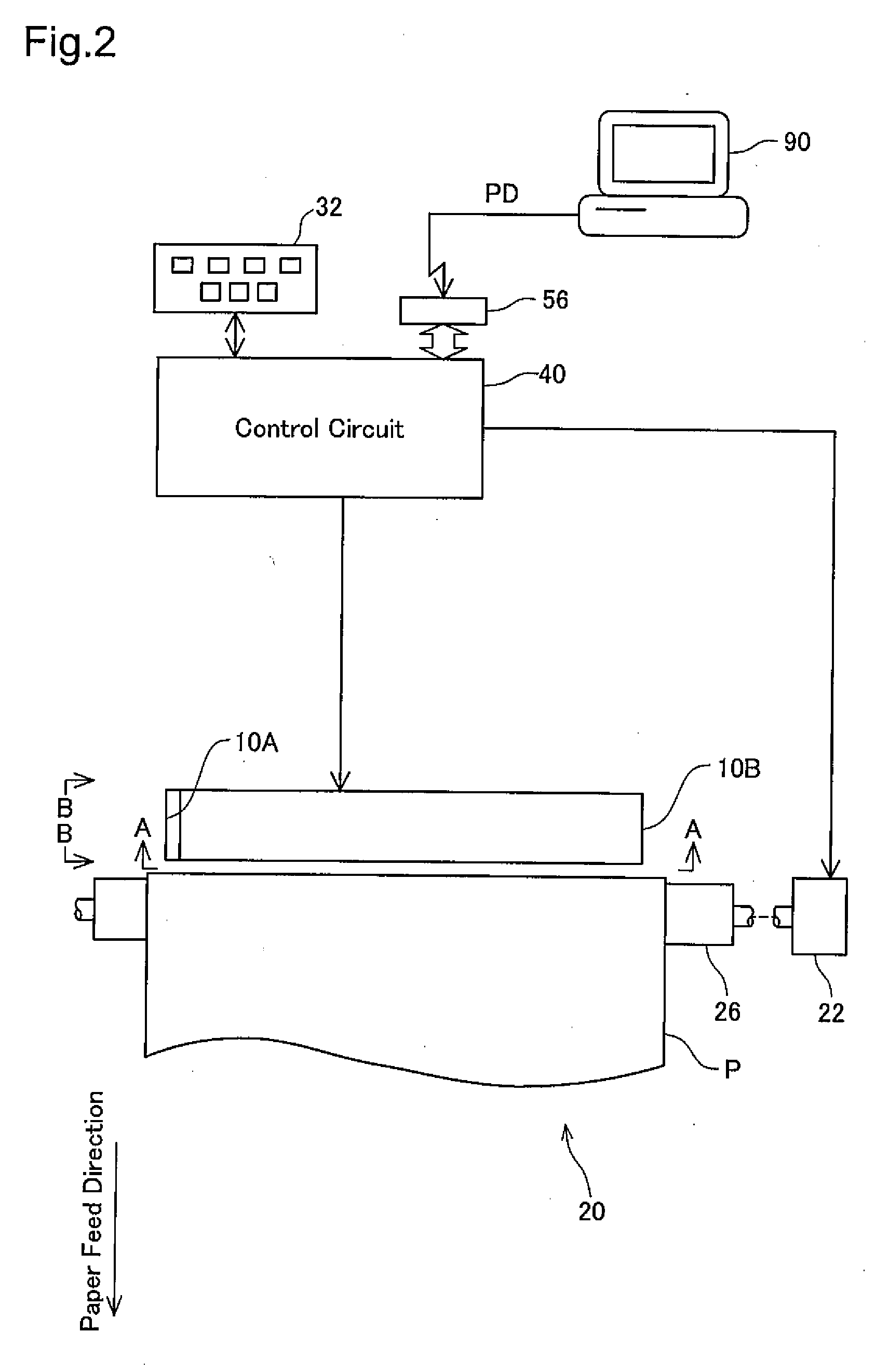Ejection Device and Ejection Method with Uneven Liquid Ejection Control Effect
a technology of liquid ejection and control effect, which is applied in the direction of digitally marking record carriers, instruments, image enhancement, etc., to achieve the effect of preventing uneven liquid ejection
- Summary
- Abstract
- Description
- Claims
- Application Information
AI Technical Summary
Benefits of technology
Problems solved by technology
Method used
Image
Examples
first modified example
C-1. First Modified Example of Second Embodiment
[0136]FIG. 28 shows a shift of a dither matrix M in a first modified example of the second embodiment. In this illustrated example, the shift of the dither matrix M is determined to maintain the relative positional relation of the first pixel group to the second pixel group across the range of the individual dither matrix M. In this manner, the dither matrix M of the second embodiment may be shifted for application.
[0137]The shift of a dither matrix aims to reduce the low-frequency noise occurring at the arrangement cycle of the dither matrix and improve the image quality. The halftoning process with application of an identical dither matrix to an identical tone value causes dots to be created at identical pixel positions in the dither matrix. This leads to generation of the low-frequency noise at the arrangement cycle of the dither matrix.
second modified example
C-2. Second Modified Example of Second Embodiment
[0138]FIG. 29 shows the contents of a dot number allocation table Dnv adopted in a second modified example of the second embodiment. Like the dot number allocation table Dn of the second embodiment (FIG. 16), the dot number allocation table Dnv of the second modified example is used to determine allocation of target dot-on numbers in the first pixel group and in the second pixel group at each input tone value. The dot number allocation table Dnv of the second modified example, however, includes a curve Td1v and a curve Tdv2 as the relation of the dot creation rate in the first pixel group to the input tone value and as the relation of the dot creation rate in the second pixel group to the input tone value, in place of the curve Td1 and the curve Td2 used in the dot number allocation table Dn of the second embodiment (FIG. 16).
[0139]For example, at the input tone value of 128, the dot creation rate in the first pixel group, the dot cre...
third modified example
C-3. Third Modified Example of Second Embodiment
[0141]FIG. 30 shows dot patterns of the two pixel groups in a third modified example of the second embodiment. Not only a dot pattern Dpa actually formed on the printing medium but respective dot patterns Dpa1 and Dpb1v generated for the first pixel group and for the second pixel group have reduced granularity of dots in the third modified example of the second embodiment. The dither matrix M of the second embodiment is designed to practically reduce the granularity of dots with regard to the dot pattern Dpa1 for the first pixel group. The third modified example reduces the granularity of dots with regard to the dot pattern Dpb1v for the second pixel group, while a dot pattern Dpb1 generated for the second pixel group in the second embodiment has no reduction of granularity.
[0142]The granularity of dots in the dot pattern generated for the second pixel group, in combination with the mutual interference of the two dot patterns due to th...
PUM
 Login to View More
Login to View More Abstract
Description
Claims
Application Information
 Login to View More
Login to View More - R&D
- Intellectual Property
- Life Sciences
- Materials
- Tech Scout
- Unparalleled Data Quality
- Higher Quality Content
- 60% Fewer Hallucinations
Browse by: Latest US Patents, China's latest patents, Technical Efficacy Thesaurus, Application Domain, Technology Topic, Popular Technical Reports.
© 2025 PatSnap. All rights reserved.Legal|Privacy policy|Modern Slavery Act Transparency Statement|Sitemap|About US| Contact US: help@patsnap.com



